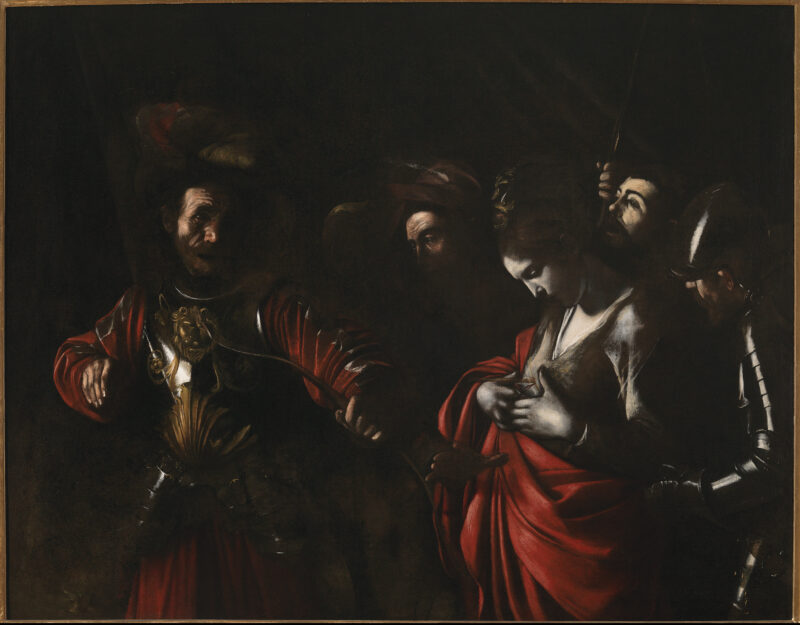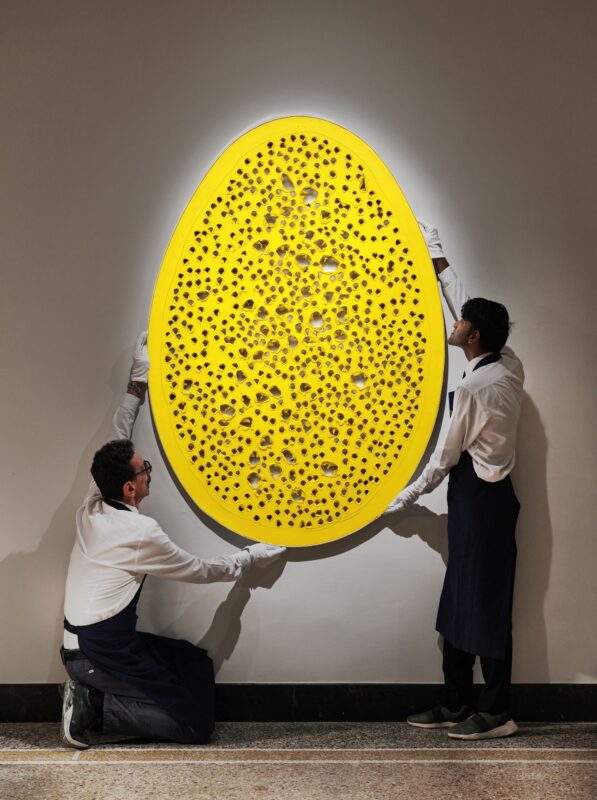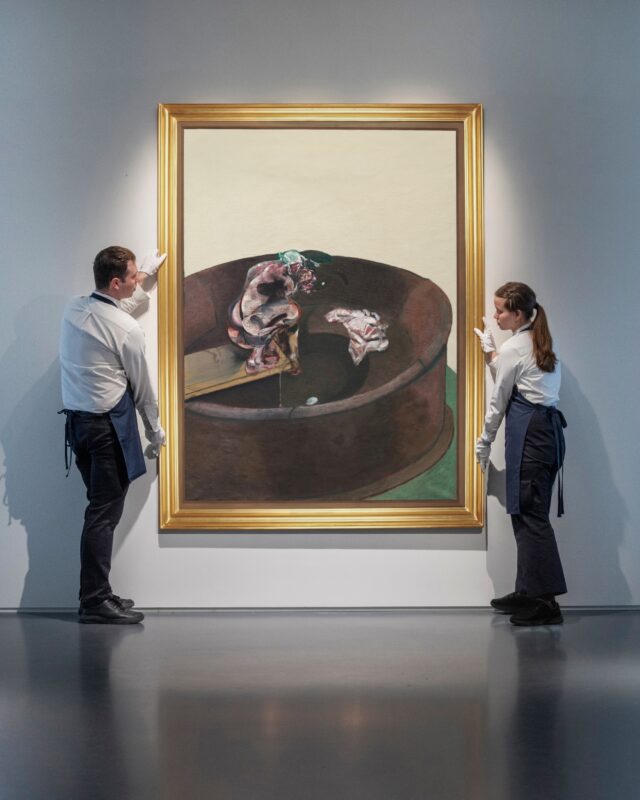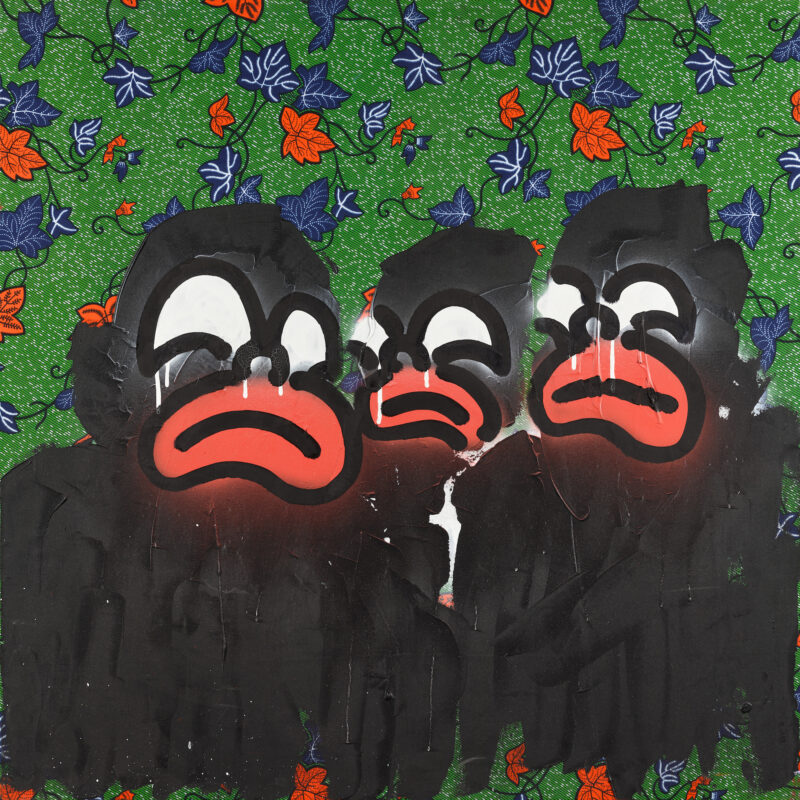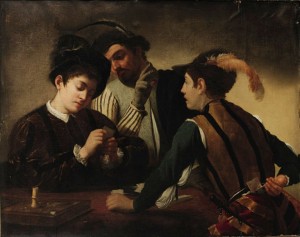
Sotheby’s has been sued over the misattribution of a painting which experts now say is a genuine Caravaggio. The case, currently being heard by the High Court, offers an insight into the relationship between aesthetic qualities and value. It also poses a challenge to Nietzsche’s great dictum that ‘it is only as an aesthetic phenomenon that existence and the world are eternally justified’.
The painting, bought for £140 in 1962, was inherited by Lancelot Thwaytes, who sold it for £42,000 in 2006. It was thought to be the work of an obscure, near-contemporary follower of Caravaggio, but Thwaytes requested that Sotheby’s verified this before the sale. Sotheby’s, it is claimed, only conducted x-ray tests, concluding that the painting was an inferior copy of Caravaggio’s The Cardships which is held in the collection of the Kimball Museum, Texas. The painting was bought by renowned art historian and collector, Sir Denis Mahon, who had the artwork cleaned and subjected to infrared imaging, demonstrating that it is in fact a genuine Caravaggio. Thwaytes, who does not dispute the attribution, is now suing Sotheby’s for negligence, claiming that the auction house failed in its duty to take all reasonable steps to ensure authenticity. The painting is now said to be worth in the region of £10million.
This is one of those miraculous transformation stories in which the holy sacrament of technology and expert opinion transfigure an insignificant painting into a missing link in the great narrative of art history. All that has really changed here is that artist who made the work now has a name and by some remarkable contingency that name is Caravaggio, which means that it is now worth considerably more money than before. What has not changed, however, is that it is still as good or as bad a picture as it ever was, since it still possesses the same aesthetic qualities as it did before.
The fact that an attribution of authorship can change the fate and worth of an artwork so dramatically without any change in aesthetic qualities reveals something interesting about the creation of value in art. In the radical absence of the artist or the living machinery of the artist’s brand, dead artists’ prices depend upon the weight of art history. This is marshalled by a tiny group of experts whose opinions, based largely on historical facts and scientific analysis, change the nature of objects. These experts’ power to create great value where before there was none resides in scholarship and learning, but, used within the market and outside of their academies, it feels like conjuring.
That experts have this power is integral to their being experts, but it also betrays the strange frisson between art as culture and art as economics. In art critical discourse, we refer to aesthetic qualities as the grounds of our judgements about the work’s symbolic or cultural value. This is a matter, philosophically speaking, of the work having certain properties – like serenity, grace or elegance – which are the perceptual grounds of the experience that informs judgement. Even if in a pre-theoretical mindset we do not articulate it this way aesthetics is the foundation of our commerce with art, so it is peculiar – if not disconcerting – that these experts, who are after all exemplary aestheticians, are called upon strip the aesthetics from art from under a veil of history and science.

The Sotheby’s case demonstrates that although aesthetic qualities are essential to symbolic or cultural value, they are irrelevant to market value. Aesthetic qualities have nothing to do with the identity of the artist, the position of the work in art history or provenance, which are the bedrock of the secondary market. The experts are there to establish these things with the result that an insignificant painting turns out to be another version of a Caravaggio by the Old Master himself. The aesthetic qualities remain unchanged from the moment that Thwaytes inherited the painting to the moment Mahon announced his discovery. And yet unbelievable market value has been created without the very thing that is the locus of the work’s symbolic value playing a significant role.
This situation is disastrous on two levels, assuming that value should primarily reside in the picture’s aesthetic qualities – which, after all, constitute its noble distinction – rather than in the name of its author. First, by locating the relevance of aesthetic qualities in symbolic value alone it divorces it from its causally efficacious role in determining market value, rendering the latter a mere affectation of historical contingency. And second, it abandons Nietzsche’s dictum with which we began. While there is no heresy in abandoning Nietzsche, there is a serious problem if money trumps the very thing that eternally justifies the pursuit of art. Once art becomes an object whose value is justified by historical facts over aesthetic qualities, it loses the very distinction that makes it both culturally worthwhile and economically exceptional.
Words: Daniel Barnes

